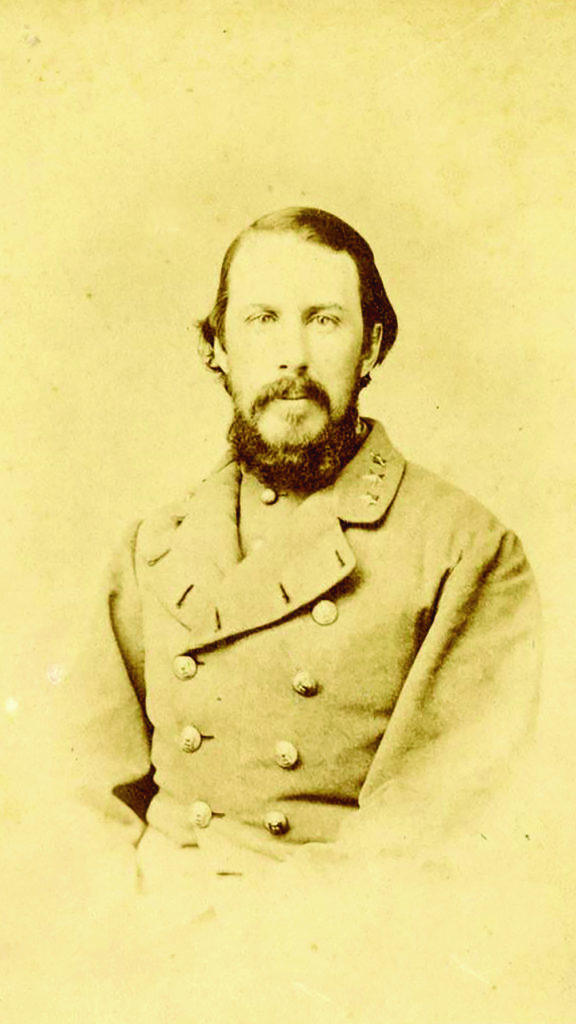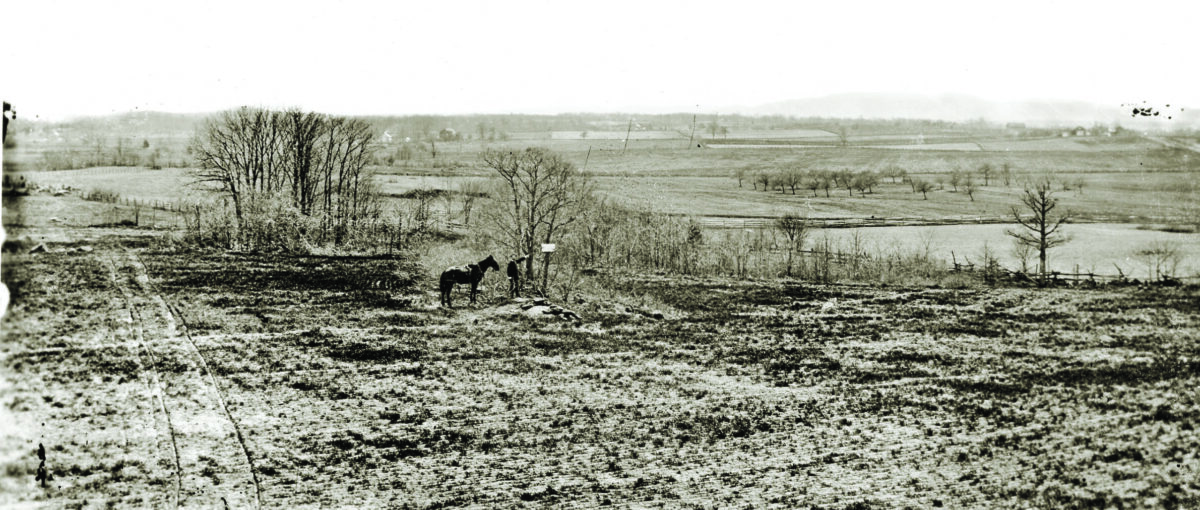When I began at Gettysburg National Military Park in the summer of 1979, it was accepted by the rangers, guides, and historians that the July 3 Confederate attack known officially as Longstreet’s Assault but more popularly as Pickett’s Charge was intended to strike the Union line in the area marked by the now-famous Copse of Trees. These were easily identified, as the trees had been enclosed with an iron fence in the 1880s to keep souvenir hunters out, and the adjacent “High Water Mark” monument identified the trees as the landmark toward which the attack was directed.
During my decades working at Gettysburg, however, two arguments challenging this accepted point began to gain some traction: the first that Ziegler’s Grove—a woodlot about 500 yards north of the copse—was General Robert E. Lee’s true target for the attack; the second that it was Cemetery Hill. Both relied on a selective use of sources and required elaborate explanations why the charge struck where it did on Cemetery Ridge rather than where proponents claimed it was supposed to. I believe that both theories are incorrect. The attack now credited principally to Maj. Gen. George Pickett hit the Union line precisely as Lee intended. The evidence supporting this is overwhelming.
The crucial thing necessary in organizing an assault like Pickett’s Charge is a landmark to guide the attack’s unit of direction. Simplicity was key in an age without wireless communication or reliable maps in the hands of key commanders. Once a landmark was selected and the unit of direction picked, all other units simply guided their movements on the unit of direction. No maps or detailed instructions were necessary.
Pickett’s Division was originally chosen as the unit of direction, but before the attack—for reasons never explained—that assignment went instead to Colonel Birkett D. Fry’s Brigade, on the right flank of Brig. Gen. J.J. Pettigrew’s Division. Had Cemetery Hill or Ziegler’s Grove been the objective, besides completely reorganizing where his assault divisions were located, James Longstreet would have selected either Colonel John M. Brockenbrough’s or Brig. Gen. Joseph R. Davis’ brigade, on the division’s left, as the unit of direction.
The Confederates also signaled where the infantry assault was intended to strike by where the weight of their pre-attack artillery bombardment landed. The numerous Union batteries on Cemetery Hill suffered relatively light damage, as did the line of artillery assembled by Colonel Freeman McGilvery on the lower end of Cemetery Ridge. But the 2nd Corps artillery brigade, occupying the point of attack, was for all intents destroyed by the bombardment. Of the two batteries closest to the Copse of Trees, Captain Thomas F. Brown’s was so badly wrecked it was withdrawn, and Lieutenant Alonzo H. Cushing’s could man only two of six guns by the end of the bombardment. This was not accidental shooting by the Confederates.

Longstreet provided fuel for alternative theories when he wrote in his after-action report that the assault was “to be made directly at the enemy’s main position, the Cemetery Hill.” This would seem to settle the objective, but Longstreet and other Confederates considered “Cemetery Hill” to include the hill east of Taneytown Road as well as the spur of high ground that extended just past the Copse of Trees, what today is considered the northern end of Cemetery Ridge. Then-Colonel Edward P. Alexander, who commanded all of Longstreet’s artillery for the pre-assault cannonade, admitted in an 1879 letter to Union Brig. Gen. Henry Hunt that he never realized there was a distinction between Cemetery Hill and Cemetery Ridge, “and consequently have them confused.”
Longstreet also wrote that the assault divisions were formed so that “the center of the assaulting column would arrive at the salient of the enemy’s position.” For Lee and Longstreet, the only discernable salient on the Union front was the projection known today as “the Angle,” where the farm walls being used for defensive cover jutted out at a 90-degree angle.
It defies belief that some other salient was the true target and the attack was blown off course by Union firepower and then by some miracle, despite chaos and confusion, the junction of the two wings arrived at another salient. Union accounts of the attack contain no evidence of an assault blown off course. In a wartime account, a sergeant in the 12th New Jersey Infantry related how in the advancing ranks of the Confederates he perceived “no hurry, no confusion as our shot was poured into them.”
Also, a Confederate eyewitness would surely have mentioned if the attack hadn’t struck its intended target. None did. Alexander even criticized his army for not making Cemetery Hill the objective, as that would have made things easier for his artillery. Alexander knew exactly where the assault was directed because it was the job of his guns to cripple or destroy the Federal artillery defending it. He would write, “A clump of trees in the enemy’s line was pointed out to me as the proposed point of our attack, which I was incorrectly told was the cemetery of the town.”
In 1869, historian John Bachelder spent several hours in the shade of this clump of trees with Walter Harrison, who had been Pickett’s acting assistant inspector general during the battle. Harrison, Bachelder recalled, “explained to me what an important feature that copse of trees was at the time of the battle; and how it had been a landmark towards which Longstreet’s assault of July 3d, 1863, had been directed.”
Capturing the Copse—or even Ziegler’s Grove or Cemetery Hill—was never the purpose of Lee’s attack. Rather, he wanted to break the Union line where he figured it was most vulnerable, along the open slope of Cemetery Ridge. Once the Union center was shattered, Maj. Gen. George Meade would have had only two options: counterattack with any reserve he had to restore his line or retreat and reconnect the broken wings of his army.
Longstreet adhered to Lee’s game plan as directed. Although the attack failed for assorted reasons, George Pickett probably summed things up best when he allegedly declared, “I think the Yankees had something to do with it.”
Scott Hartwig writes from the crossroads of Gettysburg.
This story appeared in the July 2020 issue of America’s Civil War.





